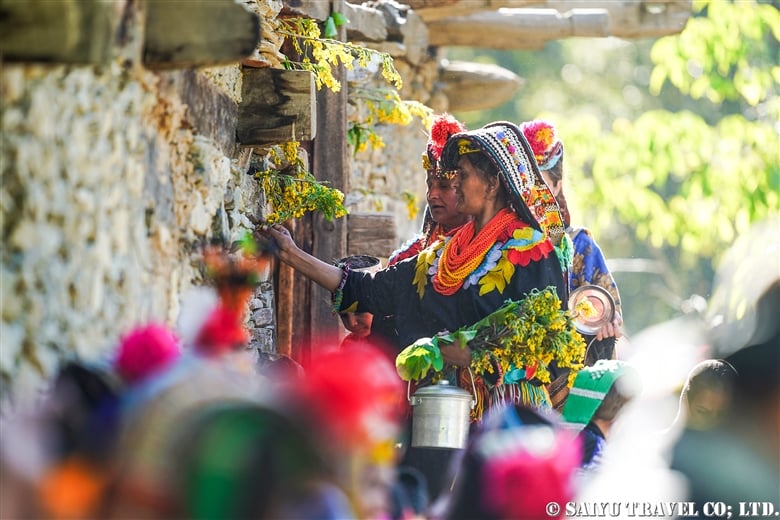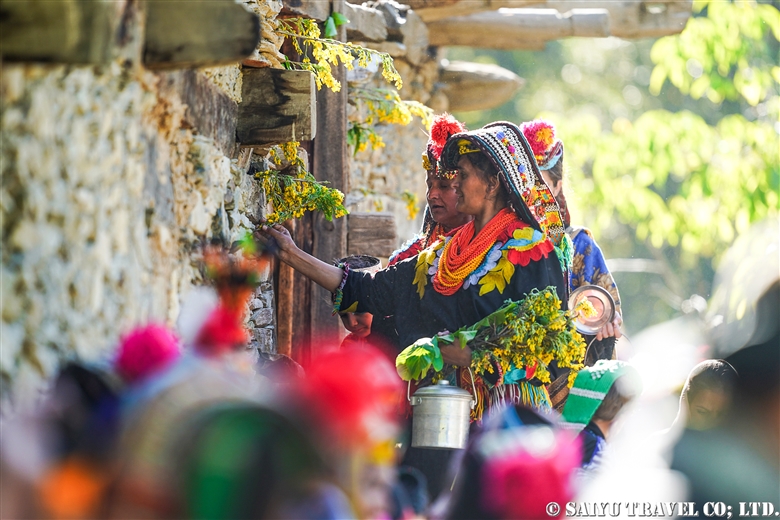
The Joshi Festival is held at the end of the long winter to celebrate the arrival of spring. Locals dress up in new clothes made during the winter and pray for the safety of livestock going out to pasture in the summer after the festival. The festival also serves as a place where young men and women can meet.
It has been a while since I last attended the Joshi festival. In the past few years, Pakistan’s frontier has been experiencing overtourism, with tourists from not only Europe and the United States but also Thailand, Malaysia, and other Southeast Asian countries now flocking to the area. In contrast, the Kalash Valley is dominated by Western tourists.
I was surprised to see the changes in the Chilam Joshi Festival via photos which recent Pakistani tourists upload on social media—for those who knew Kalash in the past, it may be an unfortunate sight to behold. I would like to share with you some of the rituals of the Joshi Festival that I experienced in the spring of 2024. The names, spellings, etc., were provided by the local people who guided me, and may differ from those found in official literature on the matter: I am merely presenting them as I saw and heard them in the field.
To the Kalash Valley
Although the suspension bridge across the Kunar River has been replaced by a concrete bridge, the traditional Ayun “villagescape” remains. Continuing on the road, there is a place where you can see the highest peak of Hindu Kush, Tirich Mir (7,708m), and if you keep going, you will drive along the river off-road with some overhanging cliffs. Then, starting from a suspension bridge, the road leads to the Bumburet valley on the left and the Rumbur valley on the right.
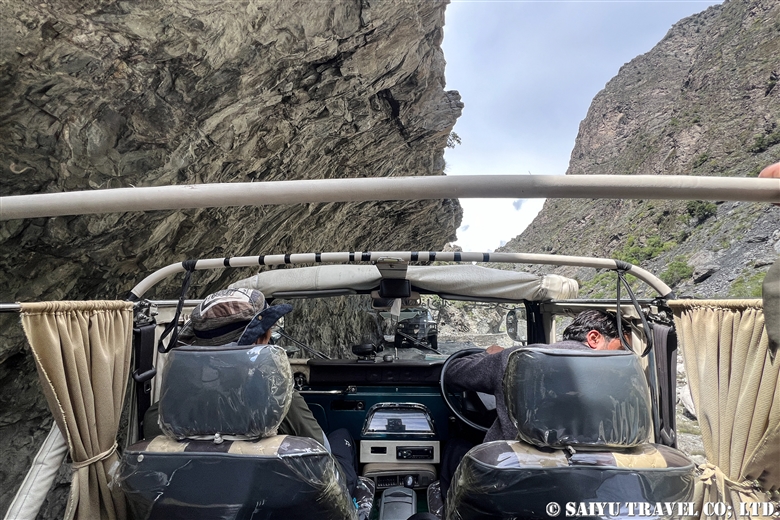
The Joshi festival of Kalash includes several rituals.
Picking Bisha Flowers (Pushen Parik)
Children go into the mountains to pick bisha flowers for temple decorations and, in the case of the Bumburet valley, for the Chirik Pipi ceremony. The bisha is a member of the bean family Piptanthus Nepalensis, and blooms earlier than other flowers. For the Kalash people, it is considered the flower that heralds the arrival of spring.
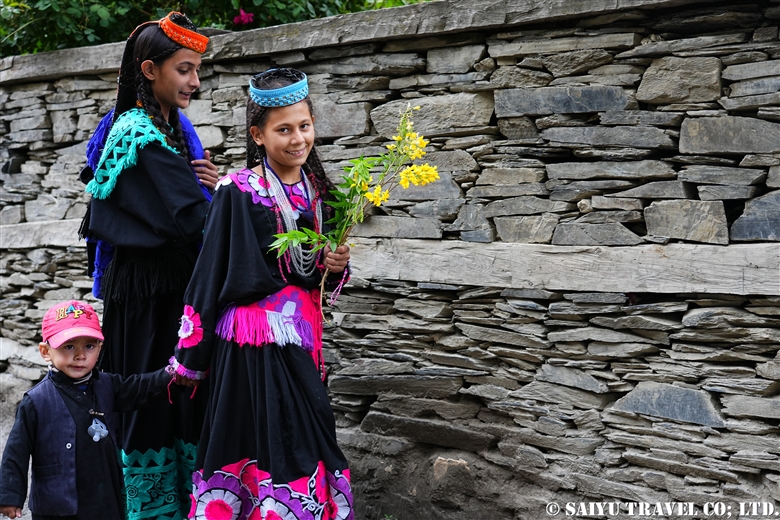
Temple Decorations (Pushi Behak)
Decorating a house or temple with bisha flowers is called pushi behak. In the Rumbur Valley, people were gathering flowers until evening, and at around 8:00 p.m., children gathered together until the start of the decorating ceremony. Around 9:00 p.m., someone banged a drum and the children all began to dance. After about 30 minutes of dancing, the children moved to their sleeping places. Early in the morning around 3:00 a.m., children carrying bisha flowers amd walnut branches started walking to the Temple of Jestak Han. At the entrance of the temple, last year’s flowers were removed and everyone decorated the temple with new flowers and walnut branches. After the outside was finished, they went inside to the altars of the four clans of the village, situated in the corner of the temple. One child went up as a representative, took down the old flowers, and decorated the altars with new ones. Then they went out to the square and danced for about half an hour.




Baby Purification Ceremony (Gul Parik) in the Rumbur Valley
Gul Parik in the Rumbur Valley is performed on babies born during the period between festivals. For the Gul Parik ceremony performed during the Joshi festival, this includes babies born between the Chaumos festival in December and the Joshi festival in May. The mother and baby are considered “impure” before this ceremony, and Gul Parik purifies them both, while also acting as a prayer for the health of the baby.
The man who performs the ceremony purifies himself and the place where he bakes the ceremonial bread. He makes the sacred walnut bread from special flour that has been purified and prepared for this ceremony, using similarly purified tools. At least five pieces of bread are baked for the men and five for the women (each with a different flour), and about twenty pieces are baked, including those to be served.



After the sacred walnut bread is baked, the mother and baby appear in the temple and the ceremony begins.

It was an amazing experience to be in such a divine space and to witness the unique “world” of Kalash prayer.
Milk Ceremony (Chirik Pipi)
The Chirik Pipi in the Bumburet valley in the morning, girls gather with milk containers and bisha flowers collected the day before. When the ceremony begins, all the children and ladies go to the sacred livestock shed. According to the villagers, this is sacred goat’s milk that has been stored since May 1st. It is then given out to the women. Normally, the Chirik Pipi song (flower song) is sung here, but I did not get the chance to hear it. There are not one but several livestock sheds, and we visited two of them. Afterwards, we witnessed a beautiful scene of villagers dancing with the mountains in the background.





Baby Purification Ceremony (Gul Parik) in Bumburet Valley
The Gul Parik in Bumburet is a different style of ceremony from that in Rumbur. All babies and mothers born since last year’s Joshi festival are purified, and prayers are made for the health of the babies. (There are actually several purification ceremonies—this is the final stage of the purification.)
A basket of walnuts and dried mulberries is delivered from the house where the baby is born to the village center. When signaled, the women of the village and the mothers and babies who are to undergo the ritual move to the area near the livestock shed. Then, a man from the village who has been assigned to perform the ritual throws milk at the gathered women and babies to purify them.
After the ceremony, the women gather again in the center of village, where baskets of walnuts and mulberries are distributed to everyone, including the tourists! Then, everyone returns to their homes to prepare for the “small Joshi (festival)” of Bumburet to be held on the same day.




Joshi Festival in the Rumbur Valley
After a series of ceremonies, the small Joshi festival (Satak Joshi) and the big Joshi festival (Gonna Joshi) are held. The festival is held in a covered venue and attracts a large number of tourists.
The small Joshi consists of repeated drumming, singing, and dancing, including Cha (a fast tempo song), Dushak (a slow tempo song), and the more complex Dalaija-i-lak, while the big Joshi includes a ceremonial performance at the end.
Kalash songs consist of drumming and singing, with limited melodic repetition. The lyrics are said to vary from ritualistic, to those touching on the mythology and history of Kalash, to those about love, and so on. The basic purpose of this music is to pray for a good harvest of milk and for the Kalash people to reaffirm their common identity.
At the end of the Joshi Festival, the special songs “Gandori” and “Daginai” are performed.

Daginai is a song that concludes the Joshi. It is a tragic love song, sung in a Cha melody. During the song, people dance in a chain connected by a string or cloth (originally woven from willow branches). It is said that if this chain breaks, it will bring misfortune, so everyone desperately grips the string. At the end, the sound of the drums suddenly stops, and all throw this cloth at once, ending the Joshi.

Lyrics of “Daginai.” (From article of “Kalash Symphony ‘Joshi’,” by Reiko Kojima, published by National Museum of Ethnology Japan in 1991)
Daginai, o’er the great valley
Some moons before the fest of Uchal, to the mountain pasture I took
O Daginai, O Daginai
With white-hilt blade, my bare stomach pierc’d
O Daginai
The background of this song is a tragic love story that is familiar to all Kalash people.
Once upon a time, a man fell in love with his wife’s sister.
Overwhelmed by jealousy, the wife killed her sister using snake poison, all while her husband was out on the pasture.
By the time he returned, the snake’s poison had already turned his lover yellow as a bisha flower; no life remained in her body.
In the throes of his sorrow, he sang the song “Daginai” and threw himself belly-first upon a blade, ending his life.
The man and his love were placed in separate coffins to rest, but when the next morning came, they were found together, sleeping peacefully beside each other.
Stunned by this, the village people separated them, returning them to their proper places. The next day, however, the couple’s bodies were found reunited in the same coffin once again.
So strong was their love, that not even death could part them.

The Joshi Festival is also significant because it acts as a meeting place for men and women. Traditionally, after the Joshi Festival, people go to their summer pastures, meaning the Uchaw Festival in late August (which is held after they return) is where the romance really happens. During the Uchaw Festival, the same stage as the Joshi is used, but this time only young men and women dance at night—in the hopes of finding a partner.
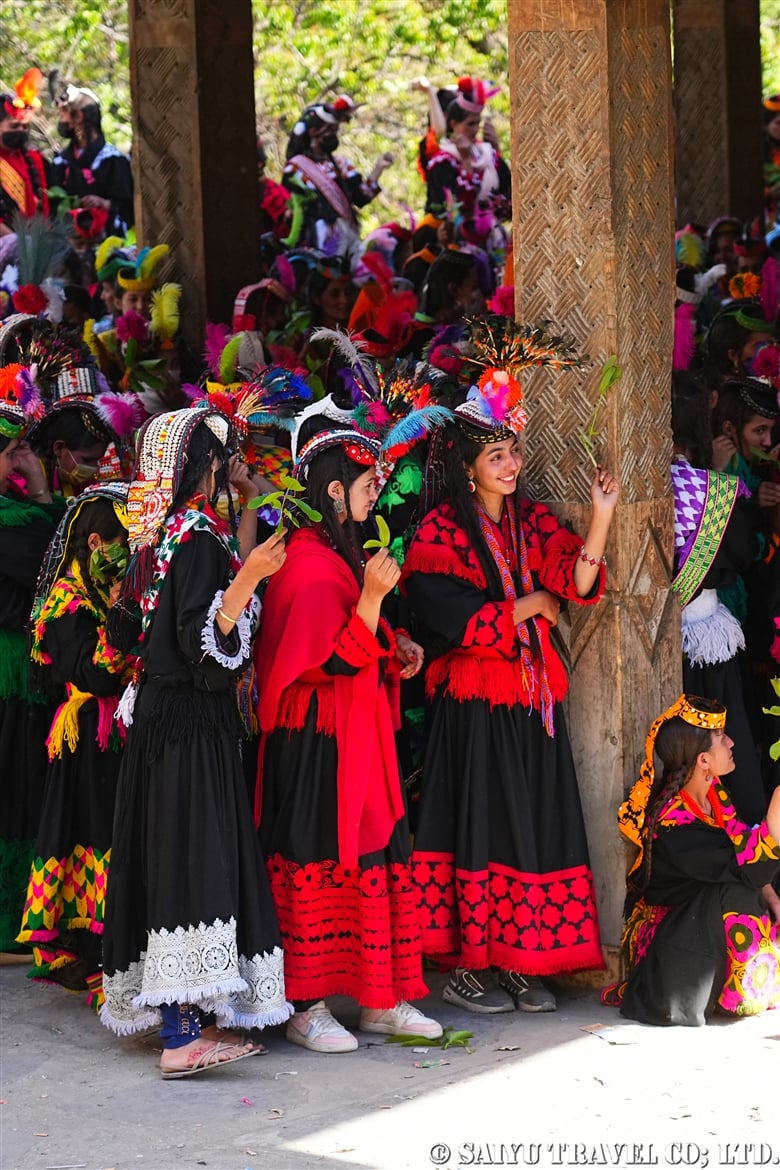
A gentleman who has been attending the Kalash Spring Festival for more than 25 years told me that although the Kalash costumes and the lifestyle of the young people have changed, the rituals are still the same as they were 25 years ago.
Photo & Text: Mariko SAWADA
Reference :”Kalash Symphony ‘Joshi’,” by Reiko Kojima, published by National Museum of Ethnology Japan in 1991)
*Contact us, Indus Caravan for more information or to make arrangements for visiting Kalash valley.
*Please follow us on Youtube, Instagram & Facebook
Category : - Kalash Valley > ◆Khyber PakhtunkhwaTag : Kalasha Valleys , Kalash valley , Bomboret village , Kalasha , Bumburet Village , Khyber Pakhtunkhwa , Pakistan Travels , Pakistan Blog , Pakistan Travel company , Pakistan Travel Blog , Pakistan tour operator , Rumbur , Pakistan Photography Tour , Bumburet , Ayun , Indus Caravan , Bumburet valley , Chitral , Rumbur valley , Kafiristan , PakistanBlog , Kalash






